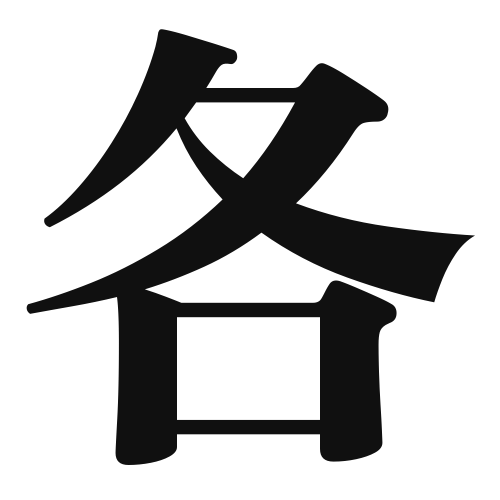1. Overview of Meaning
The kanji 各 (kaku) means “each” or “every.” It is used to indicate individual items or members within a group.
2. Formation and Radical
The kanji 各 is a compound character that combines elements to convey its meaning. It is made up of the radical 各, which itself represents the concept of “each” or “every.” This character does not belong to the categories of pictographs or ideographs but is rather a combination of meanings.
3. Examples of Usage
Common words and phrases that include 各 are:
- 各自 (kakuji) – each person
- 各国 (kakkoku) – each country
Example sentence in daily conversation:
各自の意見を尊重しましょう。 (Let’s respect each person’s opinion.)
4. Synonyms and Antonyms
Similar kanji with related meanings include:
- それぞれ (sorezore) – each, respectively (more informal)
Antonyms include:
- 全体 (zentai) – whole, entire
5. Cultural and Historical Background
The kanji 各 is often used in Japanese culture to emphasize individuality within a collective context. It appears in various proverbs and idiomatic expressions, such as:
- 各々の道を行く (onononomichi o iku) – to follow one’s own path.
This reflects the value placed on personal choice and diversity in Japanese society.
